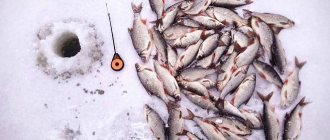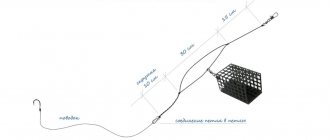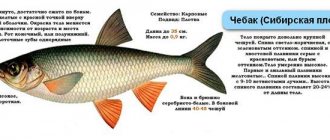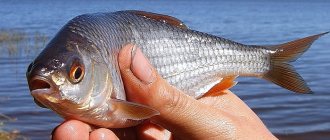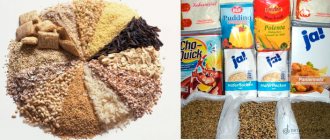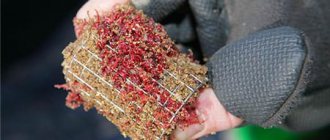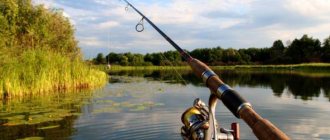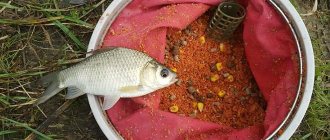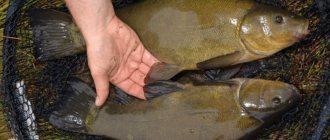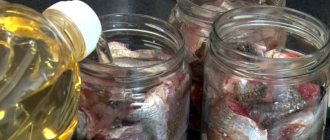Roach is a schooling fish of the carp family, widespread in our latitudes, found in almost every body of clean water. This inhabitant of the river depths is very popular among fishermen, especially during periods of its greatest activity. It constantly moves around the reservoir in search of food, so properly selected bait for roach plays a significant role in the fishing process.
As you know, the result of any fishing depends not only on the gear, the characteristics of the place, weather conditions and bait, but also on the correctly selected bait. Its role is to attract and keep fish in the desired area. A properly selected mixture can attract inhabitants of the depths at a distance of up to several hundred meters.
Where to look for roach
The favorite habitats of this fish are coastal areas with rich aquatic vegetation. In such places it is not difficult to find food, and you can hide from predators. On rivers, roach avoids the current; you should look for it in quiet areas with a “return” or in creeks.
In early spring, it prefers to stay near the steep banks of reservoirs, especially where melt water flows, carrying various seeds and insects. Closer to summer, roach spawns on warm shallows overgrown with reeds and water lilies. In hot weather, it sinks to the depths, coming out to the shore to feed in the morning and at sunset. In autumn and winter, schools of this fish stay in their homes, but when the weather changes, they walk and feed in the shallows and in reed thickets.
Choosing a fishing spot
You need to look for Siberian roach in flowing reservoirs rich in oxygen, with a lot of algae and various bottom and coastal plants, which make up a significant part of its diet. Promising fishing spots are determined visually. Chebak is careful and quite timid, so you need to focus on the presence of natural shelters in the water. In the warm season, the favorite stopping places for this fish are overgrown areas of shallow water with depths of 1-1.5 meters, where not only plant food is abundant, but also all kinds of larvae and insects. The chebak can also be found on a bottom littered with stones and branches, near thickets of reeds, sedges and other coastal aquatic plants, under trees hanging over the water. Closer to winter, the fish moves to greater depths and prefers to be on dumps and rifts, in holes, and to hide under driftwood.
What do they use to catch and what do they use to lure roaches?
The bait should be selected based on the roach’s natural diet. Its natural food is aquatic plants, larvae, insects that have fallen into the water, and small crustaceans. Bloodworms and maggots have proven themselves to be the best when fishing for roach. It also bites well on worms, dough, boiled wheat and bread.

The choice of bait for roach should depend on the following factors:
- season;
- Times of Day;
- type and size of the reservoir;
- flora and fauna of the reservoir;
- weather conditions
In early spring, the best bait for this fish are maggots, worms and insect larvae. During this period, she is the most hungry and exhausted by the winter cold, so protein food is simply necessary for her. But in the summer, the roach’s appetite subsides. It is often caught even with green thread algae wound on a hook. Groundbait for roach, like bait, should contain its natural food, taking into account the time of year.
Features of feeding roach in winter
Roaches constantly move around the reservoir in search of food. If it is not there, the fish will inevitably leave the place. Therefore, feeding roach is a necessary necessity to attract fish to the fishing site. The main purpose of bait is to stimulate the fish's appetite.
Bait can be purchased at a specialized fishing store or made independently. To do this, certain ingredients of plant and animal origin are selected, which are mixed together in proportion. The main point in preparing your own bait is not to overdo it with water. The mixture should be of medium thickness and when lowered into the pond, the correct bait should look like a cloudy column. Humidification with water is carried out at the fishing spot, at the hole. After which you can use the bait mixture.
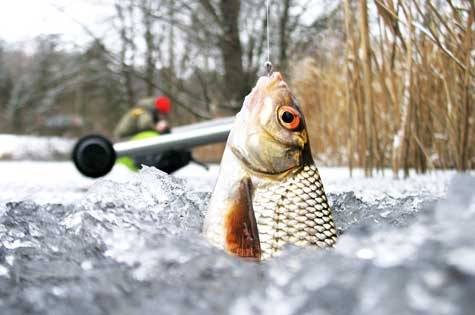
Feeding of roach is carried out in accordance with the reservoir on which fishing is planned:
- In stagnant water, the mixture is poured into the hole itself. The bait is prepared and then dropped into the pond in small lumps using small balls or using a feeder;
- When there is current or great depth, the bait enters the water using a feeder. As soon as the mixture sinks to the bottom, the feeder is emptied of food. This is done with a slight tug of the hand. Thus, the bait does not just fall to the bottom and be carried away by the current, but forms a feeding spot that will attract roaches.
In winter, roach responds well to bait of animal origin, such as bloodworms or maggots. Closer to spring, you can add earthworms and various larvae. However, this does not mean that plant baits are useless in winter. They are also used. One of the roach’s favorite treats is semolina and batter. Fish readily bite on such baits. Unfortunately, there is no universal recipe for catching roach. At each reservoir, bait is selected experimentally.
Features of choosing bait
When going for roach, you can freely buy a ready-made bait mixture in a store or market, but for some reason most fishermen still prefer a homemade product. This, firstly, saves money, and secondly, it is simply impossible to ideally select a purchased bait for a specific body of water, time of year and fishing location. Therefore, bait for roach, prepared with your own hands from selected ingredients, will make fishing more effective.
Under no circumstances should you use universal bait. Although the roach is a fish of the carp family, its feeding method is somewhat different than that of its relatives. In other words, store-bought bait for roach and bream, carp, crucian carp, etc. differs in its properties. This is due to the fact that all these fish have different feeding horizons. If carp, bream and crucian carp feed from the bottom, then roach looks for food in the water column and on its surface.
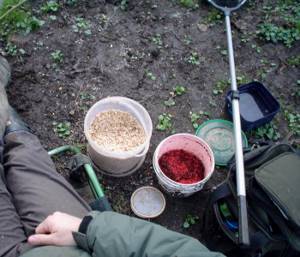
In this regard, the bait for roaches should not sink instantly, but dissolve in the water as soon as it gets into it. It is also advisable that the mixture does not contrast too much with the color of the bottom - this will alert the fish.
Application of bait (feeding technique)
The technique for feeding roach depends on where the fishing spot will be.
For dump truck
An opening feeder (or dump truck) is used when fishing for roach in reservoirs with standing water or with a small current. Drill a hole a little above the hole and pour bait into it. Then the mixture will go directly to the roach fishing spot. The action of the feeder consists of the following stages:
- bait is poured into the feeder (a little more than half);
- the lid closes;
- a retaining ring is inserted;
- the feeder is lowered into the pond;
- the device sinks to the bottom of the reservoir;
- wait about 10-15 seconds;
- open the lid of the feeder with a sharp movement of your hand so that its contents end up at the bottom.
Open the feeder with bait at a distance of 0.5 - 2 meters from the bottom. Then the fish will be less afraid. During repeated feeding, the feeder opens a little higher than the first time.
On the current
Feeding roach in a river differs significantly from feeding it in reservoirs with stagnant water or a slight current. The main difference is that when fishing like this, heavy ingredients are added to the bait, for example, king prawns. Such a mixture will not be carried away so much by the current and will attract fish to the fishing spot.
If there is a current, feeding directly into the hole or using a feeder is not suitable. In such cases, the bait will be carried away by the current.
In winter, if there is a current, the best option is to feed the roach just above the fishing spot. To do this, drill another hole at a short distance. It depends on factors such as the depth of the reservoir, the speed of the current and its direction. In weak currents, a good effect is observed when feeding fish with small balls. To do this, make several lumps from the mixture and carefully place it into the hole.
Feeding is carried out using a regular feeder or a dump feeder. The main task is to ensure that the bait mixture lies strictly at the bottom of the reservoir, and does not simply wash out. If everything is done correctly, the aroma of the bait will attract roaches to the fishing spot.
Make the first feeding in a hole drilled upstream. The mixture enters the reservoir using a feeder or “by hand”. In the first case, the bait is introduced into the feeder and lowered into the pond. In the second option, several small balls are made from the mixture. They need to be slightly frozen for 3-5 minutes. This is done so that the lumps stick better. Feed the roach throughout your fishing trip.
The main feature of this bait is the presence of crushed shrimp. They give the bait mixture its own unique aroma. Gradually spreading downstream, it will begin to attract roaches to the fishing site.
In addition, shrimp have more weight than standard bait components (sunflower seeds or rye crackers), due to which the majority of them will be on the bottom. And this is a very important point, since this is the only way shrimp can attract a school of roach to the fishing spot.
This bait recipe is time-tested and is perfect for fishing in the winter when fishing in the current.
On still water
In a reservoir with stagnant water, bait can be thrown directly into the fishing spot, into the hole. This is done if the roach is above the bottom. If the fish is caught on the bottom, then it is better to form small balls from the bait and throw them into the hole. Note that in order to form a cloudy column that will attract fish, make one of the lumps of the mixture loose. Due to this, the ball will disintegrate and the mixture will form an attractive haze.
The most effective way to feed fish at depth is to use a feeder. With its help you can put bait directly on the bottom under the hole. Then the roach will stand in a flock in the fishing area.
In shallow water, you need to feed the roach by throwing the bait in bulk into the hole. The aroma of the mixture and the turbidity formed as a result of entering the reservoir. A prerequisite for fishing in shallow water is light weight bait. The bloodworm at such a depth must be thrown directly “from hand” directly under the ice. Closer to spring, bait of animal origin is constantly shaken into the hole, due to which the roach itself rises after the falling food.
Composition of bait for roach
Standard bait for roach should include the following main components:
- base (steamed breadcrumbs);
- boiled cereals or legumes (rye, wheat, peas, lentils);
- ground cake (most often sunflower);
- maggots, crushed worms, bloodworms (for winter) and algae (for summer);
- flavorings;
- clay.
Breadcrumbs are most often used as the basis for bait for roaches. They swell well and dissolve in water, and also have an excellent smell. It is recommended to use boiled wheat, rye and legumes as part of a mixture for fishing on the current.
The best aromas for attracting roaches, which are used in various baits, are:
- honey;
- caramel;
- anise;
- hemp and flax seeds;
- cinnamon;
- coriander;
- thyme
Clay in the bait plays the role of a gluing and weighting element, and also makes it possible for the bait to reach the right place without crumbling.
Bait for roach and various tackles
For fishing for roach, float and feeder tackle are often used. Many fishermen make the mistake of using the same bait mixture for these types of fishing, since bait for bottom and float fishing differs from each other in several performance characteristics.
Bait for float fishing
The roach mixture for float fishing in still water should be very light. When moistening it, add a minimum amount of water to the container. The optimal level of moisture will be when the molded ball disintegrates when it hits the water. After breaking the ball, the particles slowly sink to the bottom, attracting roaches. If the bait is over-moistened, the ball, without breaking on the water, will quickly sink to the bottom and will not be able to collect roach in the fishing zone.
Since the amount of bait that is thrown into the fishing point is quite large, you should not get carried away with adding excessive amounts of flavorings. The components included in the roach bait themselves have an attractive aroma for fish.
If we are talking about float fishing for roach in the current, then the principle of operation of complementary foods changes. It consists of heavy soil consisting of earth, clay and sand. The soil keeps nutrient particles from being quickly carried away by a directed flow of water. Fishing in the current involves the formation of dense bait balls, which will quickly reach the bottom and will be eroded by the current for several tens of minutes. The food particles washed out of the balls will gradually collect the roach in the feeding area.
Groundbait for bottom fishing
The mixture for feeder fishing for roach must be active. Having sunk to the bottom, the bait stuffed into the feeder does not just lie on the bottom soil, but actively releases food particles that attract fish, creating a cloud of turbidity around it. This effect can be achieved by adding various ingredients that have buoyant properties:
- dry coconut flakes;
- ground seed peel;
- medium-ground oat flakes.
These ingredients should be added only after the complementary foods have been moistened, when the mixture has completely absorbed the water. Seeing constantly floating particles of food, the roach will definitely become interested and approach the feeder.
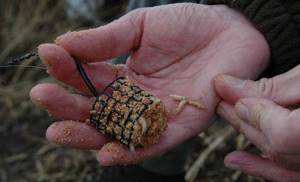
The volume of the feeder is small, so a limited amount of food is supplied to the fishing site. When a large flock approaches, in which there are large individuals, the mixture delivered to the point will be quickly eaten, and the roach will leave. To prevent this from happening, feeder baits include a large amount of flavoring. Even after the fish has completely eaten the mixture, a fragrant trail remains in the water, which prevents the school from leaving the feeding area. In addition, the bottom soil is impregnated with aromas, which also helps to retain the roaches in the fed zone.
The best bait for roach
The range of baits for roach is quite wide, but it is impossible to choose the best one without recommendations based on your own experience. However, there are mixtures that, over the years on the market, have truly earned trust due to their effectiveness:
- "FishDreamElite";
- "Trick" (Roach);
- "Trick" (Feeder)
These baits are aimed specifically at roaches and their culinary preferences. But they can also be used for catching bleak, verkhovka and chub.
To choose the best bait, you should definitely take into account the time of year, because the nutrition of the fish changes depending on the temperature, pressure and the presence of certain foods in the reservoir.
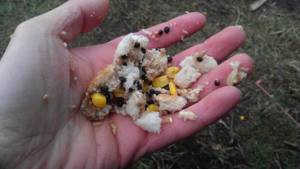
Bait for roaches in winter and late autumn, in addition to plant components, must include small or chopped bloodworms, a worm, as well as powdered milk and cocoa to form a “dusty” cloud. In cold weather, it is also advisable to add branded flavors with the smell of spices, which will attract fish even under ice.
Bait for roaches in summer may contain crushed algae. During this period, it is good to use flax or hemp seeds, as well as crushed leaves of nettle, mint, and basil as attractants.
Tackle for catching chebak
Chebak is a medium-sized fish, with a maximum weight of up to 700 grams. Therefore, the basis for the tackle is a thin monofilament fishing line 0.12-0.2 mm or a braided cord up to 0.1 mm. Hooks are used No. 3-No. 5, the length of the fore-end varies depending on the attachments and baits used. To catch a chebak, use the following set of fishing gear:
• Float rod. 4-7 meter Bolognese rods with 3-15 grams of dough and fast action are well suited. Any type of reel can be used, but the best sensitivity of the gear will be provided by a light “inertia”. The sinker is used in a round or spindle-shaped form, so as not to catch tufts of algae, and is attached immediately behind the leash. The thickness of the leash should be significantly less than the main fishing line, and the length should be 10-20 cm. Fluorocarbon is well suited for the leash, which becomes almost invisible in the water. A silicone stopper and a drop-shaped sliding float weighing 5-10 grams are attached to the main fishing line. This design of equipment makes it possible to fish both the bottom and the surface, fish with a wire and use slow-sinking bait (insects). • Bottom tackle (feeder). Used for catching chebak in the twilight hours (morning-evening) and in the cold season. Its main advantage is long casting and the ability to catch large or trophy fish. Rods from 4 to 5 meters with a dough of 30-100 g are used. and a sensitive tip. A good catch is achieved by installing feeder equipment, consisting of an anti-twist to which a feeder set aside is attached and a fluorocarbon leash 25-35 cm long with an attached hook. Various cereals are used to fill the feeder. • Ultralight. The chebak, like the rudd, reaches a weight of over 100 grams. exhibits some predatory tendencies and can be caught well with the smallest spinners when retrieved quickly. In muddy water, bright golden or yellow spoons are used; in clear water, silver “spinners” with red splashes are unrivaled. • Tackle for vertical jig fishing. This method is effective and efficient if there is too much vegetation in the chosen fishing area. The equipment consists only of a round heavy jig tied to the main line and a sensitive nod. For convenient use of the tackle and quick hooking of fish, the main line is reduced to half the rod. Next, the usual process of fishing with a jig takes place, involving a watercraft or the angler wading into the water. • Winter gear. On ice, chebak fishing is carried out using simple “filly” fishing rods and classic fishing rods with a reel, whip and sensitive nod. Light jigs of yellowish, reddish shades or white round (oval) shape are used. The fishing line used is ultra-thin - 0.07-0.1 mm. When fishing in a strong current, the weight of jigs increases, and the thickness of the fishing line can be 0.12-0.15 mm. A popular method of fishing for chebak is fishing with “standing” tackle with light floats weighing 1.5-2 g. The bait is burdock moth larva, worm, maggot, bloodworm.
Do-it-yourself bait for roach
Bait for roach at different times of the year should have its own composition, which is most suitable for its natural diet in a given period. Here are some popular recipes.
For spring before spawning:
- breadcrumbs – 200 g;
- fried buckwheat – 200 g;
- powdered milk – 50 g;
- chopped bloodworms or worms – 50 g;
- anise flavoring – 5 g;
- clay or river sand.
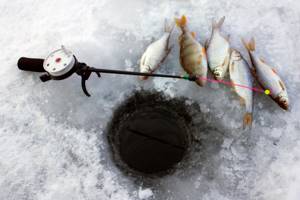
For summer:
- breadcrumbs or ground crackers - 200 g;
- boiled rye – 200 g;
- “Hercules” porridge – 100 g;
- hemp seeds – 20 g;
- filamentous algae – 50 g;
- makukha (sunflower cake) – 100 g;
- small (feed) maggot – 30 g;
- clay or river sand.
For autumn:
- breadcrumbs – 150 g;
- biscuit – 150 g;
- rye bran – 100 g;
- feed maggot – 30 g;
- bloodworm – 20 g;
- cumin – 3 g;
- clay.
For winter:
- breadcrumbs – 200 g;
- sunflower cake – 50 g;
- bloodworm or worm – 100 g;
- cocoa or milk powder - 3 tablespoons;
- flavoring (pepper, cumin, coriander) – 2-3 pinches.
Do-it-yourself bait at home
There are many bait recipes for roaches; it is worth choosing them taking into account all individual characteristics. We have chosen the simplest recipes, but at the same time the most catchy ones for each of the fishing seasons and using the most popular ingredients, so that each of the readers can prepare the mixture themselves at home.
The best are considered:
With bran
Required ingredients:
- breadcrumbs – 150 grams;
- cake – 50 grams;
- bran – 70 grams;
- worms, bloodworms – 40 grams;
- vanilla – 3 grams;
- river sand;
Cooking method:
- Place breadcrumbs, bran, finely chopped worms and cake into a deep bowl. Mix everything well.
- On the shore of the reservoir, take sand and put it in a bowl.
- Add flavoring , a small amount of water from the pond and mix all ingredients thoroughly.
- Make small balls.
With seaweed
For preparation you will need:
- breadcrumbs – 150 grams;
- seaweed – 60 grams;
- cake – 30 grams;
- dung worms – 40 grams;
- cinnamon – 3 grams;
- river sand;
Cooking method:
- Mix bread crumbs , cake and finely chopped worms.
- Take algae near the pond , chop it and add it to the bait along with river sand.
- Place cinnamon and river (lake) water into the resulting mass.
- Make small balls.
Preparation of bait
Before you make bait for roaches, you need to select the ingredients in the right quantities. Cereals or beans are pre-boiled or steamed, and then ground in a meat grinder. Dry ingredients must be ground to a powder state.
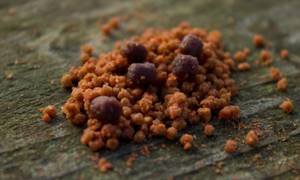
Homemade bait for roach, as well as store-bought bait, is mixed directly at the fishing site using water from the reservoir where the fishing will take place. This will rid the mixture of foreign odors that may alert or scare away the fish. Liquid store-bought flavors are added last.
Baits for summer
Active mechanics is what roaches expect from bait prepared with their own hands in the summer. The “explosive” crumbling mixture will attract fish much faster. If the ball of bait breaks when it hits the surface of the water, and leaves a trail behind it as it dives, you can expect a good catch. Therefore, summer catching sorogi with semolina is not without meaning.
Compound
When selecting components, water temperature is critical. As long as the indicators are within comfortable limits for the fish, they will willingly go for millet and pearl barley. The first croup is more attractive to the large “blackback”, the second – to the “ordinary” roach.
A drop in temperature and an increase in the frequency of precipitation is a signal to abandon large fractions when preparing bait. Instead of high-calorie cereals, they begin to use small food bloodworms, as a result of which the mixture becomes finely dispersed.

Photo 1. Millet is one of the best cereals for groundbait.
Regardless of the environment, you should strive to ensure that the finished product creates turbidity when it enters water. The desired trail will be obtained if the mixture is slightly under-moistened, making it dry. It is also worth including components with different rates of dissolution in water. Some of them must have high buoyancy. The property is inherent:
- coconut flakes;
- oatmeal;
- ground sunflower peel.
Dust is also created by dairy components: infant formula, dry cream. Cocoa also has the required quality.
To get bait that the roach loves and readily eats in the summer, it is necessary to take into account the color perception of the fish. She is wary of anything that goes beyond her usual range. Unusual and contrasting spots on the water not only do not attract the sorog, but also scare them away. The reaction is more acute at the end of August.
Important! You should not include ingredients in the mixture whose shade is strikingly different from the color of the bottom.
Fishing method is another key guideline. When using a float rod on a quiet body of water, the mixture is made light, practically no water or flavorings are added. The bet is made on the nutritional attractiveness of the components included and their slow sinking to the bottom. But if the current is strong, then the bait is made according to the absolutely opposite principle: they strive not for the airiness of the mixture and the rapid disintegration of the ball from it, but for low mobility and slow erosion. The necessary qualities are achieved by introducing into the bait clay, sand and earth collected at the fishing site.
Aromatization
Fish has a well-known sweet tooth. The best scents for roaches include:
- anise;
- caramel;
- maggot attractant;
- vanilla;
- honey;
- coriander.
Most summer recipes include anise, but as the weather gets colder, many fishermen abstain from it. Reason: The supplement stimulates hunger. This quality is required in June and July, but not in the last weeks of summer.
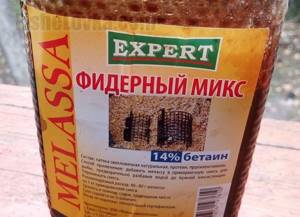
Photo 2. Flavoring the mixture with molasses gives a good effect.
Groundbait recipes
A homemade product often turns out to be more effective, since it is created taking into account all available factors: place, time and method of fishing, climate characteristics and the level of “feeding” of the inhabitants of the reservoir.
Summer Blend
It is used with equal success in June, July and August. For preparation you need:
- millet, semolina (1 glass each);
- barley grits (2 cups);
- water (3 glasses);
- pea flour;
- ground crackers.
The amount of the last ingredient is determined based on the method of fishing. Feeding with balls requires less crumbs, and feeding with feeders requires more. If fishing takes place on the river, then an additional component is added to the preparation: rolled oats flakes.
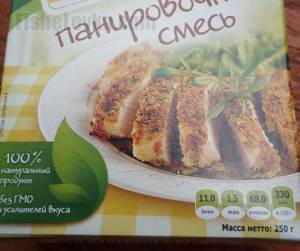
Photo 3. Breading mixture is often used instead of ground crackers.
The process of making summer bait:
- pour millet with 3 glasses of water, boil;
- add egg and semolina to the resulting porridge;
- Just before feeding, break the mixture with breadcrumbs and sprinkle with pea flour.
The recipe given is basic. Based on it, you can prepare highly targeted mixtures that are ideal for a specific summer month. For the June and July versions you will need large factions:
- small boilies;
- peas;
- pearl barley;
- canned corn;
- pellets
The proportion of large fractions in comparison with the main ingredients should not be high. In August, their percentage is gradually reduced to a minimum, and when a cold front approaches, they are completely abandoned. Reason: cooling of the water reduces the feeding activity of the fish.
Universal mixture
It is distinguished by a pronounced sweet taste and persistent aroma - characteristics that are required when fish mainly consume plant food. To prepare this summer bait for roach with your own hands you will need:
- breadcrumbs (2 kg);
- finely ground bran and corn flour (0.5 kg each);
- baby formula or dry cream (0.3 kg);
- hemp, coconut, sunflower cake (0.1 kg each);
- sweet flavoring (anise, vanilla).
Dry ingredients are mixed, then flavoring is added. The amount of the latter, if necessary, can be increased by 1.5 times - relevant for feeder fishing.
Feeding methods
The kneaded mixture is formed into balls, the size of which depends on the conditions present. If there is no current and the bottom is hard and level, it is better to use small lumps. In cases where the current is fast, the best option would be balls measuring 5-8 cm in diameter.
To throw bait to the fishing spot, you can use several methods, depending on the distance and the equipment used:
- manually;
- using a “rocket”;
- using a special slingshot;
- using a feeder (when fishing on a feeder).
Experienced fishermen feed the fishing area several days before fishing. This allows the fish to get used not only to the look and aroma of the mixture, but also to a certain area of the reservoir. This solution significantly increases the efficiency of fishing.
In winter, when fishing from ice, at shallow depths, the roach is fed with pinches in such a temporary manner that 300-400 g of the mixture should be enough for the whole day. If the depth is more than 5 m, then the best option would be to use a feeder. When winter fishing, you should not feed the roach with a large number of bloodworms, especially just one - this will certainly attract schools of perch or ruff.
Bait for roaches in winter.. About strong aromatization
Roach is perhaps the only fish for which vegetable bait is generally prepared in winter (all sorts of porridges, store-bought mixtures, crackers, etc.). For ruffe, perch, and even for other “white” fish (bream, silver bream, white-eye, etc.), bait is usually not prepared - fishermen feed all these fish. an ordinary bloodworm. I just poured bloodworms into the feeder, lowered it to the bottom - and it was done.
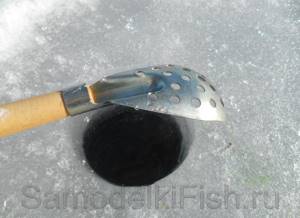
Ruffs, perches and even white bream will probably soon swim up to such tasty bait. But the roach is not. The love of roaches for plant bait has long been noticed. And if you want to catch a roach from the ice, then you need to stock up on plant bait (and not bloodworms, which the ubiquitous small brushes and perches will probably immediately snatch up).
Some features of the manufacture and use of bait
In order for fishing to be most effective and not disappointing, it is also important to take into account the following nuances:
- when preparing bait, you should not overuse flavorings - the pungent smell frightens roaches no worse than any predator;
- You should not use old (stale) sunflower cake, as well as other components that have a musty smell;
- bait for roaches in summer should contain a maximum of ingredients of plant origin, and in winter - animal;
- the amount of food in excess of the norm will distract the fish from the bait;
- It is better to feed the area in small portions, with an interval of 15-30 minutes.
Roach behavior and food preferences
In June, the fish switches to a “sedentary” lifestyle and tries to stay near places rich in food. Her taste preferences also change. If the weather is still cool, like spring, then the roach is first fed with worms. After a slight warming, they switch to maggots and caddisflies, and from the moment a warm front is established, the plant base is actively used.
In July, the fish’s preferences become more established and they actively eat mud. However, you should not completely abandon animal baits. Sometimes the sorog is better suited for caddis flies and grasshoppers than for corn.
At the beginning of August, changes in behavior are usually minor. The flocks are still scattered, individual individuals readily respond to the bait. But already at the end of the month, the roach groups, and when the water cools to 14 degrees, it begins to go into deep water, actively feeding along the way.
Changes in flavoring
Sweet smells are what roaches love in summer, but not at the very beginning and end. The aromas are good from the moment warm temperatures set in until the first signs of autumn.
Factional changes
Dramatic changes are observed in August. The feeding activity of fish decreases as the water cools. At this time it is easy to overfeed her. To prevent this from happening, it is necessary to switch from coarse-grain summer bait for roaches to fine-grained bait.
